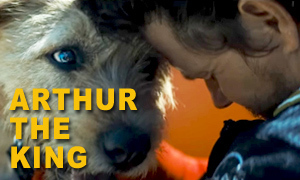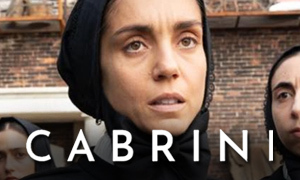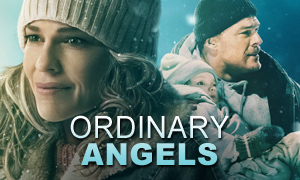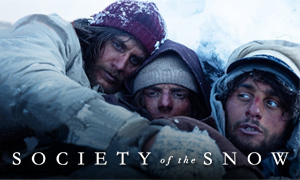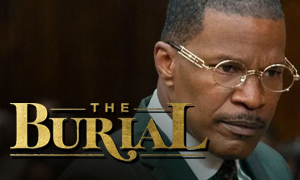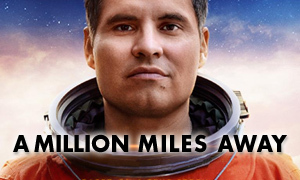Loving (2016)
| REEL FACE: | REAL FACE: |
Joel Edgerton
Born: June 23, 1974 Birthplace: Blacktown, New South Wales, Australia | Richard Loving
Born: October 29, 1933 Birthplace: Central Point, Caroline County, Virginia, USA Death: June 29, 1975, Central Point, Caroline County, Virginia, USA (killed by a drunk driver) |
Ruth Negga
Born: 1982 Birthplace: Addis Ababa, Ethiopia | Mildred Loving
Born: July 22, 1939 Birthplace: Central Point, Caroline County, Virginia, USA Death: May 2, 2008, Central Point, Caroline County, Virginia, USA (pneumonia) |
Nick Kroll
Born: June 5, 1978 Birthplace: New York City, New York, USA | Bernard S. Cohen
Born: January 17, 1934 Birthplace: Brooklyn, New York, USA |
Jon Bass
| Philip J. Hirschkop
Born: May 14, 1936 Birthplace: Brooklyn, New York, USA |
Marton Csokas
Born: June 30, 1966 Birthplace: Invercargill, New Zealand | Sheriff Garnett Brooks
Born: July 11, 1922 Birthplace: Woodford, Virginia, USA Death: January 11, 2014, Bowling Green, Virginia, USA |
Michael Shannon
Born: August 7, 1974 Birthplace: Lexington, Kentucky, USA | Grey Villet
Born: August 16, 1927 Birthplace: Beaufort Wes, South Africa Death: February 2, 2000 |
Alano Miller
Birthplace: Orlando, Florida, USA | Raymond Green
Born: December 29, 1934 Birthplace: Caroline County, Virginia, USA |
Quinn McPherson
| Peggy Loving
Born: December 26, 1959 |
Sharon Blackwood
| Lola Loving
Born: abt 1910 Birthplace: Virginia, USA Death: August 1985, Milford, Caroline County, Virginia, USA |
Winter-Lee Holland
| Musiel Jeter
|
David Jensen
Born: September 23, 1952 Birthplace: Pinckneyville, Illinois, USA | Judge Leon M. Bazile
Born: abt 1891 Birthplace: Virginia, USA |
When did Richard and Mildred meet?
The Loving true story reveals that Richard Loving and Mildred Jeter met when they were adolescents growing up in the same area in Virginia. Mildred was attending an all-black school and Richard was attending a white high school. At first, Mildred thought Richard was arrogant, but as she got to know him she realized he was "a very nice person" and they quietly fell in love. After dating on and off for a couple years, Mildred discovered she was pregnant at 18 and they decided to get married. Like in the movie, Richard was working as a bricklayer. -Biography.com
Did Richard and Mildred go to Washington, D.C. to get married?
Yes. Fact-checking the Loving movie confirms that Richard and Mildred traveled out of the state of Virginia and went to nearby Washington D.C. (District of Colombia) to get married. They tied the knot on June 2, 1958.
Did Richard's mother advise them not to get married?
"No, I didn't advise them not to get married," said Richard's mother, Lola Loving. "I just told him not to go up there [to Washington, D.C.]." In the interview, she went on to say that they seem to be "very happy." In the movie, Richard's mother (portrayed by Sharon Blackwood) voices a similar but slightly stronger stance against their union, telling Richard (Joel Edgerton), "You never should have married that girl." Lola says that she likes Mildred (Ruth Negga) but tells Richard he should have known better with regard to the trouble they could end up in. -The Loving Story
Why does Richard refer to Mildred by the nickname "Bean"?
Richard Loving refers to his wife Mildred by the nickname "Bean" or "Beanie" because it is a shortened version of "String Bean," the nickname she had received as a girl due to her tall and skinny stature. -Biography.com
In how many U.S. states was interracial marriage illegal at the time Richard and Mildred got married in 1958?
The Loving movie true story confirms that interracial marriage was illegal in 24 states in 1958, including Virginia, and was punishable by jail time. -The Loving Story
Did Richard Loving really like to drag race on the weekends?
Yes, like in the Loving movie, Richard and his two friends worked on a car and spent many weekends at the race track. Their wives and girlfriends tagged along. "We had 99 trophies, 33 a piece," says Raymond Green, Richard's best friend. -The Loving Story
Did the police break into their home at night while they were in bed?
Yes. On July 14, 1958, just a few weeks after they got married, Sheriff Garnett Brooks and two deputies raided their Caroline County home at approximately 2 a.m. in hopes of catching them having sex, which would put them in violation of another Virginia law. Instead, the officers found them asleep in their bed. "They came one night and they knocked a couple times. I heard 'em and before I could get up, they just broke the door and came on in," recalls Richard. "When we got up they were standing beside the bed, with flashlights."
"They asked Richard who was that woman he was sleepin' with," states Mildred, "and I said, 'I'm his wife,' and the sheriff said, 'Not here you're not,' and he said, 'C'mon, let's go.'" Mildred attempted to show the police the marriage certificate hanging on the bedroom wall, but the certificate was used against them as evidence that they were guilty in Virginia of "cohabiting as man and wife, against the peace and dignity of the Commonwealth." This was the charge that was levied against them. According to Virginia law, it didn't matter that they had gotten married out of state in Washington, D.C. -The Loving Story
Were Richard and Mildred Loving really arrested the night the police raided their home?
Yes, and on January 6, 1959, they pled guilty and were sentenced to a year in prison for marrying each other. Their marriage had violated Virginia's Racial Integrity Act of 1924, the state's anti-miscegenation statute, which forbid marriage between whites and non-white persons ("colored" persons). Their sentence was suspended for 25 years under the agreement they would leave the state of Virginia and not return (they moved to Washington, D.C.). The trial judge in the case, Leon M. Bazile, would later write the following in January 1965 when two ACLU lawyers asked him to reverse his ruling and have the case vacated:
Does the documentary about the Lovings contain any real footage of Richard and Mildred?
Yes. The entire Loving Story documentary is filled with candid footage of the real Richard and Mildred Loving. At the time of the trial, they allowed themselves to be filmed all the way through the landmark Supreme Court decision. The documentary offers a firsthand look at their affection for one another and their struggle to be allowed to live together as husband and wife in Virginia. Their children and family members are also shown, in addition to the two lawyers who took on their case. Nancy Buirski's documentary unfolds like a movie itself and is in many ways better than the Jeff Nichols film it inspired.
Did the sheriff really tell an inmate, "I should put you in with her tonight," as they passed Mildred's cell?
Yes. This happened when Mildred was being held at the jail in Bowling Green, Virginia. She later told a reporter, "One afternoon this inmate had been out, on the outside working, and when the sheriff brought him back in he said, 'I should let you go in here with her tonight.' Scared me to death." The jail where Richard and Mildred were held still exists today. Actress Ruth Negga, who portrays Mildred, was able to see the cell Mildred was held in. -EncyclopediaVirginia.org
Were Mildred and Richard unaware there was a law in Virginia against mixed marriages?
Yes, according to Mildred, she was unaware that she and Richard could be jailed for living in Virginia as a married interracial couple. She was however aware that they could not get married within the state, which is why they had headed north to Washington, D.C. to tie the knot. -The Loving Story
Were there other interracial couples living in Caroline County, Virginia in addition to the Lovings?
"Yeah, I know a few," said Richard Loving at the time. He said that he never found out why the police picked on him and Mildred and not the other couples, but as emphasized in the film, he believes that somebody who didn't like them talked. He said that Caroline County was a small community where whites and blacks were mixed together and helped one another. -The Loving Story
Did the authorities refuse to let Mildred out of jail on a bond?
Yes. In researching the Loving true story, we learned that Richard and Mildred were under $1,000 bonds, but the authorities told the bonding company that they would put Richard back in jail if the company tried to get Mildred out too. She stayed there several more days until they let her go home without a bond but under her father's responsibility. He was to make sure she showed up at court. "He went to his parents' home, I went to my parents' home," said Mildred. -The Loving Story
Did Mildred really write to then-Attorney General Robert Kennedy for help?
Yes. By 1963, Mildred longed for her family and friends and was fed up with city life living in exile with Richard and their children in Washington, D.C. "I didn't want to leave away from around my family and friends," said Mildred, "and when I was in Washington, well, I just wanted to go back home. ... The children didn't have anywhere to play. It was like being caged, and I couldn't stand it. I couldn't take it." After her son Donald was hit by a car, she had enough (Donald suffered scrapes and bruises but was okay). She wrote then-Attorney General Robert Kennedy for help, and he recommended that she contact the American Civil Liberties Union (ACLU), which decided to take the Lovings' case. -The Loving Story
Were the Lovings involved in the Civil Rights movement?
No. "I wasn't in anything concerning Civil Rights," said Mildred. "We were trying to get back to Virginia. That was our goal, to get back home." Mildred did mention that she would have loved to have met Dr. Martin Luther King Jr. -The Loving Story
During their time in exile from Virginia, did Richard and Mildred ever sneak back into the state together?
Yes. Though they agreed to leave the state and not return together for 25 years, Richard and Mildred not only made solo trips to Virginia to see family and friends, on occasion they snuck back in together, risking imprisonment. Like in the film, they did sneak back in so that Richard's mother, a midwife, could deliver their children. At first, because of what a lawyer had said, Mildred thought they were allowed to come back in to visit, but when they came back for Easter, the police found them again and kicked them out. Eventually, they returned and lived in Virginia in secrecy. -Biography.com
How did the Lovings' case end up in the hands of the United States Supreme Court?
After ACLU lawyers Philip J. Hirschkop and Bernard S. Cohen unsuccessfully tried to get the original judge, Judge Leon M. Bazile, to reverse his ruling, they took the Lovings' case to the Virginia Supreme Court of Appeals. "We knew it was obvious that no Virginia state court was going to rule in our favor," says attorney Bernie Cohen. "What Judge Bazile did when he issued that racist opinion was give us a clear shot to appeal to the Supreme Court of Virginia. We appealed to the Supreme Court of Virginia, got another terrible decision denying us relief, and then we had an appealable order from there to the U.S. Supreme Court." Since the Supreme Court agrees to hear just one out of every 200 cases (then roughly one out of 400), the odds weren't in their favor that the Supreme Court would hear the case. "Maybe we were naive, but we were certain the court would hear the case," says Bernie. "Brown v. Board of Education had already been decided." The United States Supreme Court agreed to hear the case, with oral arguments taking place on April 10, 1967. -The Loving Story
Did the Lovings go to the Supreme Court to hear the oral arguments?
No. Like in the Loving movie, the true story confirms that their lawyers invited them, but Richard said they probably wouldn't understand what was unfolding, so they decided not to go. His wife Mildred commented that she was nervous enough without being there. Richard Loving told attorney Bernard Cohen to tell the court that he loved his wife and that it was just unfair that he couldn't live with her in Virginia. You can listen to the Loving v. Virginia oral arguments online. -The Loving Story
Did Richard and Mildred Loving's case really lead to a landmark Supreme Court decision?
Yes. Richard and Mildred Loving's case led to the unanimous 1967 Supreme Court decision Loving v. Virginia, which overturned all previous state laws banning interracial marriage. This included Virginia's Racial Integrity Act of 1924, which prohibited marriage between white and non-whites, including persons with African or Native American Ancestry (Mildred was of both African American and Native American descent). Virginia's Racial Integrity Act had included any person with even one ancestor of African ancestry, which was known as the one-drop rule ("one drop" of black blood meant you were classified as black). This rule was also eluded to in the movie Free State of Jones, which found Newton Knight's great-grandson being put on trial for marrying a white woman (his great-grandmother was possibly a black woman).
Ultimately, Richard and Mildred Loving's legal team argued that Virginia's anti-miscegenation law that had made it illegal for the Lovings to marry or to live as a married couple in the state was in violation of the Fourteenth Amendment to the Constitution, specifically its Equal Protection Clause. The Supreme Court agreed, stating that the law violated both the Equal Protection Clause and the Due Process Clause. In Chief Justice Earl Warren's opinion for the court, he stated that marriage is a basic civil right and to deny that right based on race deprives citizens of "liberty without due process of law." The June 12, 1967 Supreme Court ruling affected 16 states in total that up until that time still had laws that forbade interracial marriage. -Biography.com
The Supreme Court's unanimous 9-0 ruling read:
Did the Lovings ever move back to Virginia?
Yes, after the Supreme Court's 1967 Loving v. Virginia decision struck down existing state laws banning interracial marriage, Richard and Mildred were able to freely live in Virginia again, having been banned from the state for almost a decade (though they had been living there in secrecy for a while). Richard built a home for them on an acre of land given to them by Richard's father, where they raised their three children. It was close to Mildred's mother and Richard's family. They lived there as a married couple until Richard's death in 1975. Mildred continued living there and passed away from pneumonia in 2008. -Biography.com
Did Richard Loving die in a car accident?
Yes, a fact-check of the Loving movie verifies that Richard Loving died in 1975 when a car driven by a drunk driver struck his own car. Mildred was in the car as well and her injuries left her blind in her right eye. -Biography.com
Have there been any other movies made about the Lovings' story?
Yes. Nancy Buirski's documentary The Loving Story was released in 2011 and a TV movie titled Mr. and Mrs. Loving aired in 1996. The latter starred Timothy Hutton as Richard and Lela Rochon as Mildred.
Richard and Mildred Loving Interview & Court Case Audio
Broaden your knowledge of the Loving movie true story by watching a news segment that includes an interview with the Lovings. Then listen to the oral arguments from the Supreme Court case Loving v. Virginia.
Link-to-Learn More:

